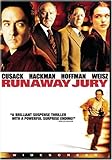[easyazon_image add_to_cart=”default” align=”left” asin=”B00Q7WBGHG” cloaking=”default” height=”160″ localization=”default” locale=”US” nofollow=”default” new_window=”default” src=”http://ecx.images-amazon.com/images/I/61SHfez9OEL._SL160_.jpg” tag=”disabilitymovies-20″ width=”113″]As a conflation and extension of several classic fairy tales, [easyazon_link asin=”B00Q7WBGHG” locale=”US” new_window=”default” nofollow=”default” tag=”disabilitymovies-20″ add_to_cart=”default” cloaking=”default” localization=”default” popups=”default”]Into the Woods[/easyazon_link] includes two depictions of blindness usually glossed over in the Disney versions. In the first, Rapunzel’s nameless prince is blinded by nettles the witch blocked his path with as punishment for visiting Rapunzel. Her tears cure him (a trope later seen in Victorian literature such as Jane Eyre), and the two aren’t seen again.
Cinderella’s evil stepsisters are similarly blinded as punishment, this time by the birds of Cinderella’s acquaintance acting on their own recognizance. (True to the older versions of the story, they also have bits of their feet cut off in an effort to fit into the golden slipper.) The two thereafter sport anachronistic designer sunglasses and white canes with their brocade dresses, using modern symbols to convey blindness instead of classical ones, like a blindfold.

